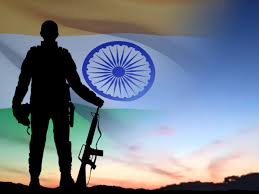Even as the country marches forward, efforts will be made to check its rise and undermine its stability, both internally as well as externally.
June this year has been a busy season for number crunchers: at the end of May, the National Statistical Office (NSO) released GDP figures for FY 25. Then the World Bank released an important document which estimated the levels of poverty in our country over a 12-year period ranging from 2011-12 to 2022-23. Finally, the BJP, the ruling party at the Centre, came out with its own report card of its 11 years in office.
Overall, the three reports appear to suggest that we are transforming from a poor to a middle-income country (current per capita income: $2,700 per annum). GDP growth in the last quarter of FY 25 at 7.4%, as well for the whole year at 6.5%, beat all expectations, with the latter statistic broadly aligning itself to the long-term average, before Covid, of 6.6%. During the year, agriculture grew at an impressive 4.5%, construction industry at 9.4%, and manufacturing at a disappointing 4.5%. Private consumption comprising about 60% of GDP grew at a rate 7.2 %—faster than the overall growth of GDP. It continues to be the main propellant of our economy. This implies that we are not as vulnerable to the vagaries of international trade as we would have been had we been an export dependent economy. Also, foreign exchange reserves of $686 billion provide us with a solid buffer against external shocks. With retail inflation currently at a six year low of 2.8% and investment currently standing at about 33% of GDP, the economy appears to be cruising along smoothly. One vulnerability lies in the struggling sector of micro, small and medium industries which has yet to fully recover from the onslaught of Covid-19. The other concern relates to the future price of oil.
Between FYS 12 and 23, points out the World Bank, India lifted nearly 22% of its population—from 27.1% to 5.3%—out of extreme poverty, by the yardstick of a minimum consumption level of $3 per day ppp, 2021 (ppp stands for purchasing power parities. This is an index which adjusts for vastly different price levels in different countries—in this case, India and the US in 2021). By this yardstick, 269 million Indians clawed their way out of a harsh existence. If one lowers this to $2, the number of such people would decline further to 2.3% of the population. According to the World Bank, this impressive exercise in poverty alleviation was aided by free and subsidised food transfers.
On the occasion of its 11 years in office, the BJP has brought out a small booklet to commemorate its achievements. For the most part, this appears to supplement the findings of the World Bank report and the latest GDP statistics. Suffice it to merely point out some of the outstanding achievements of this government: namely, providing free food to nearly 810 million people, piped water to 150 million households, building 40 million homes for the poor, constructing 120 million toilets, granting 525 million Mudra loans etc. Further, all these benefits were distributed without any discrimination on the basis of caste or religion.
Together the three report cards appear to indicate the rise within the country of a burgeoning middle class, more confident than ever before of its place in the sun. The social and political conflicts we see in our society are largely a manifestation of the assertion of these forces against an entrenched ancient regime. The latter thrives on a sense of entitlement and is currently fighting to remain relevant. The polarising conflicts we see today will only become sharper in future.
India remains the world’s fastest growing large economy for the fourth year in a row. In a couple of years, it will eclipse Germany to become the third largest economy of the world. But let’s not fool ourselves, nobody likes a new kid on the block. Even as the country marches forward, efforts will be made to check its rise and undermine its stability, both internally as well as externally. It is vulnerable on its eastern, western and northern fronts.
Under these circumstances, expect defence outlays to expand disproportionately in the near future. Is this necessarily a bad thing? Not entirely. For the private sector will be involved in this exercise and both defence R&D and manufacturing will create jobs. Studies have shown that an expenditure of Re 1 on defence results in an additional GDP of Rs 2. Also, after Operation Sindoor, there is evidence of a growing demand abroad for defence equipment manufactured in India.
The writer was Chief Commissioner of Income-Tax and is the author of the Moral Compass- Finding Balance and Purpose in an Imperfect World, Harper Collins India, 2022.







